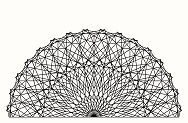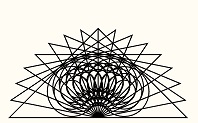


 |
 |
 |
Zinc has been found to improve the immune response to viral and bacterial infections through many studies over several years. Many pieces of the puzzle have been put together in determining what zinc does in metabolism and immunity. An overview of the evolution provides a perspective. Vegetarian animals (herbivores) have a zinc shortage, because there is very little zinc in plants. Yet zinc is so valuable to animal metabolism that a need for zinc developed some time back. About when the Great Apes began to evolve into humans, zinc became more available, which would have been about 3 to 5 million years ago. This transition occurred when the pre-humans stumbled onto the large population of shore creatures in Southwest Africa. At first, the pre-humans would have been attracted to the eggs of sea birds and shore birds which were aggregated in very high numbers. Then they would have been drawn to sea creatures along the shore. Bird eggs would have increased the availability of zinc somewhat, while shoreline animals, such as muscles and clams, would have greatly increased zinc availability. The resulting increase in availability of zinc caused a rapid evolution in zinc metabolism for the ancestors of humans. Of course, it was largely the increase in protein that caused humans to evolve from the Great Apes. But while protein metabolism was improving, zinc metabolism was greatly expanding the ability of the evolving pre-humans to fight diseases. The disease fighting potential of zinc was so dramatic in improving the survival of the evolving humans that the copper-absorbing physiology was hijacked for the purpose. I know this because I acquired a copper shortage when taking zinc and copper together before noticing in the nutrition literature than zinc interferes with copper utilization. I had to separate taking zinc and copper over time to eliminate the copper shortage. What this situation adds up to is that zinc creates such a highly exploitable metabolic tool that copper metabolism is partially sacrificed to promote it. Since evolution is based upon survival of the fittest, zinc promoted survival even while encumbering the necessary copper metabolism. To improve survival so drastically, zinc would have been focussed primarily upon the immune system. Other elements of physiology would have been less influenced by a metabolic shift due to a more available mineral. And since zinc was so valuable in improving the immune system, there would have been a targeted evolution against the disease organisms that the immune system was acting upon. So the immune system used zinc as a tool for targeting bacterial and viral pathogens, but those pathogens, particularly viruses, could not so easily respond by countering the effect. A virus could not evolve a protection against the use of zinc against it, because there are only a small number of proteins encoded by a virus. Zinc could be used by the immune system as a highly diverse catalyst facilitating the enzymatic attack upon virus metabolism. A viral infection is met within cells by an array of proteins which act against the virus. The largest part of immunity against viruses occurs within cells, while the antibodies in the blood function as a mop-up and preventative system. So zinc could be adapted as a highly effective tool for combatting viruses, while viruses would be unable to acquire counter measures. This circumstance indicates that zinc metabolism resulted in a specific evolution of immunity against viruses. Evolution tends to produce marginal existence including a shortage of minerals. The reason is because the slightest improvements are selected for in evolution. A slight advantage occurs even when there is less of a mineral than optimum. Therefore, after evolution creates a need for marginally available minerals, such as zinc, most species benefit from more zinc than is often available. Mode Of Action For Zinc Evidence indicates that zinc is used by the immune system to destroy foreign matter and disease organisms through oxidation-reduction reactions. Oxidation-reduction means transfer of electrons. Fewer electrons means oxidation; increased electrons means reduction. Zinc is the strongest oxidizing agent that can be used routinely in physiology. Copper is too strong of an oxidizing agent for physiological purposes apart from being embedded into a porphyrin ring for cytochromes. Iron is also too oxidative for general purposes when not in a porphyrin ring or protein-controlled ferredoxins which include sulfur. The reason why zinc allowed advanced evolution of humans is because it is vastly superior to superoxide in destroying foreign matter and disease organisms. Superoxide had to be used for that purpose when there was a shortage of zinc, which occurs for herbivores such as the ancestors of humans, because there is almost no zinc in their vegetation diet. Superoxide requires a large amount of energy for its production. NADPH is used to create superoxide. It supplies a high energy electron which would otherwise energize three ATP molecules. Using the energy of three ATP molecules for each superoxide molecule is so energy intensive that not enough superoxide can be produced rapidly enough to combat diseases in an optimal manner. In other words, the superoxide runs out too fast. Zinc doesn't have that problem. It functions as a catalyst rather than a synthesized molecule. As a catalyst, it is rapidly re-activated where it is located, and very little energy would be needed to re-activate it. It would gain the energy and move the related electron in the process of dismantling the foreign substance. That means virtually unlimited and instantaneous activity occurs as needed—as fast as contact with the foreign substance occurs. So the net effect is that superoxide is of very limited supply and rapidly runs out when it is needed, while zinc is continuously available to the extent that it exists. Therefore, any amount of zinc in the diet greatly improves the ability of the immune system (white blood cells) to break down foreign substances and disease entities. Among the substances that need to be broken down are control molecules for the pain and inflammation response. Those chemicals accumulate, until the white blood cells remove them. As a result, pain will disappear rapidly when there is plenty of zinc available. Taking zinc will noticeably reduce pain in nearby areas such as with teeth. Healing is improved when proper chemical balance is produced by getting rid of accumulated control chemicals. Ferredoxins also act as catalysts where iron exchanges electrons; but ferredoxins are much more restricted than zinc and require a lot of energy. Proteins define and limit the reactions of ferredoxins in a manner similar to enzymes, while zinc activity is not limited to reactions defined by proteins, though proteins are often involved in unknown ways. Ferredoxins act as reducing agents, while zinc can act as both an oxidizing and reducing agents. Taking Zinc Supplement My experience creates a preliminary indication that Vitamin C should not be taken two hours before or after taking zinc, because Vitamin C reduces zinc to an ineffective form. Zinc is normally taken as zinc gluconate, where zinc is in the plus two form of the ion. Perhaps Vitamin C reduces zinc to the plus one or even the nonionic form. Vitamin C can prevent free iron from oxidizing to the plus three (ferric) form which is very toxic. People take iron in the plus two (ferrous) form. So Vitamin C does need to be taken with iron, but not with zinc. Metals as supplements are difficult for the liver to handle. So metals should not be taken in large amounts or on an empty stomach which speeds up absorption, or they can damage the liver.
|
|
||||||||||||||||||
 |
 |
 | ||
 |
 |
 |
||